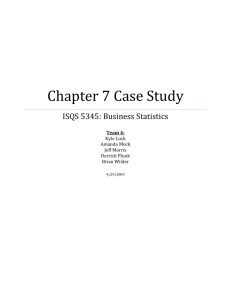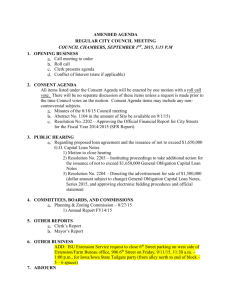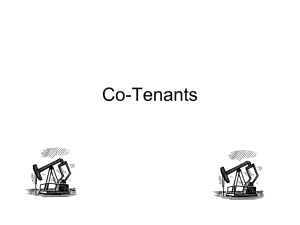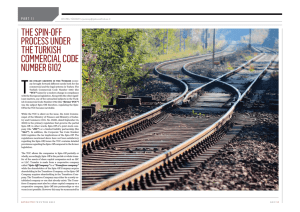29 Notes and Other Long-Term Receivables Notes receivable and
advertisement
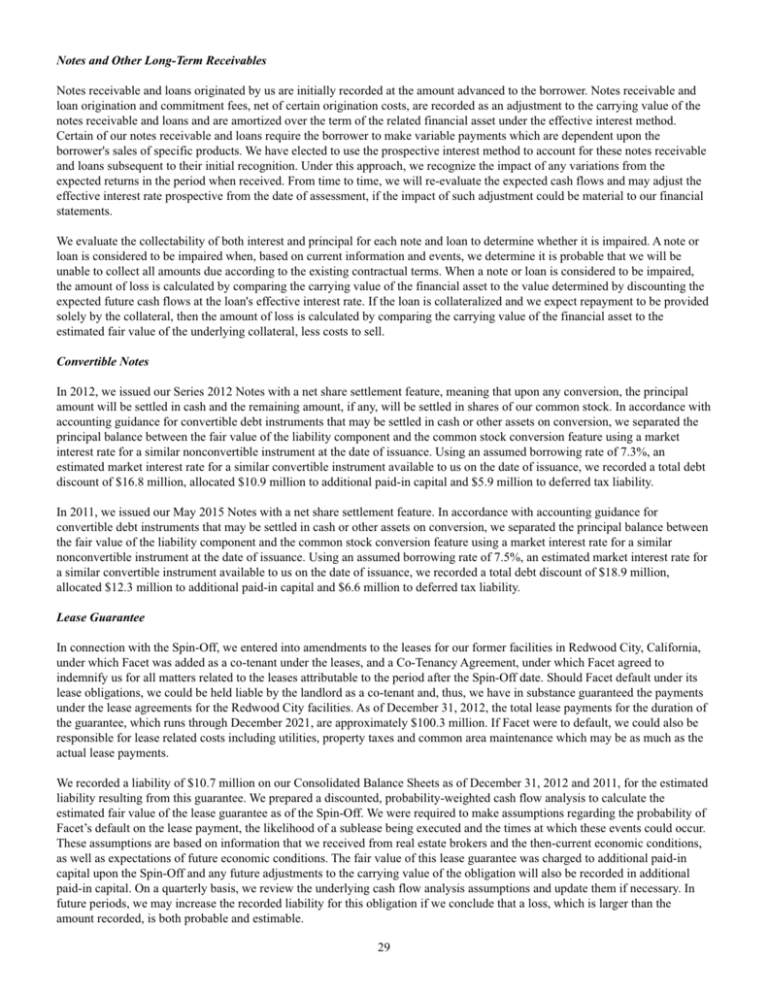
Notes and Other Long-Term Receivables Notes receivable and loans originated by us are initially recorded at the amount advanced to the borrower. Notes receivable and loan origination and commitment fees, net of certain origination costs, are recorded as an adjustment to the carrying value of the notes receivable and loans and are amortized over the term of the related financial asset under the effective interest method. Certain of our notes receivable and loans require the borrower to make variable payments which are dependent upon the borrower's sales of specific products. We have elected to use the prospective interest method to account for these notes receivable and loans subsequent to their initial recognition. Under this approach, we recognize the impact of any variations from the expected returns in the period when received. From time to time, we will re-evaluate the expected cash flows and may adjust the effective interest rate prospective from the date of assessment, if the impact of such adjustment could be material to our financial statements. We evaluate the collectability of both interest and principal for each note and loan to determine whether it is impaired. A note or loan is considered to be impaired when, based on current information and events, we determine it is probable that we will be unable to collect all amounts due according to the existing contractual terms. When a note or loan is considered to be impaired, the amount of loss is calculated by comparing the carrying value of the financial asset to the value determined by discounting the expected future cash flows at the loan's effective interest rate. If the loan is collateralized and we expect repayment to be provided solely by the collateral, then the amount of loss is calculated by comparing the carrying value of the financial asset to the estimated fair value of the underlying collateral, less costs to sell. Convertible Notes In 2012, we issued our Series 2012 Notes with a net share settlement feature, meaning that upon any conversion, the principal amount will be settled in cash and the remaining amount, if any, will be settled in shares of our common stock. In accordance with accounting guidance for convertible debt instruments that may be settled in cash or other assets on conversion, we separated the principal balance between the fair value of the liability component and the common stock conversion feature using a market interest rate for a similar nonconvertible instrument at the date of issuance. Using an assumed borrowing rate of 7.3%, an estimated market interest rate for a similar convertible instrument available to us on the date of issuance, we recorded a total debt discount of $16.8 million, allocated $10.9 million to additional paid-in capital and $5.9 million to deferred tax liability. In 2011, we issued our May 2015 Notes with a net share settlement feature. In accordance with accounting guidance for convertible debt instruments that may be settled in cash or other assets on conversion, we separated the principal balance between the fair value of the liability component and the common stock conversion feature using a market interest rate for a similar nonconvertible instrument at the date of issuance. Using an assumed borrowing rate of 7.5%, an estimated market interest rate for a similar convertible instrument available to us on the date of issuance, we recorded a total debt discount of $18.9 million, allocated $12.3 million to additional paid-in capital and $6.6 million to deferred tax liability. Lease Guarantee In connection with the Spin-Off, we entered into amendments to the leases for our former facilities in Redwood City, California, under which Facet was added as a co-tenant under the leases, and a Co-Tenancy Agreement, under which Facet agreed to indemnify us for all matters related to the leases attributable to the period after the Spin-Off date. Should Facet default under its lease obligations, we could be held liable by the landlord as a co-tenant and, thus, we have in substance guaranteed the payments under the lease agreements for the Redwood City facilities. As of December 31, 2012, the total lease payments for the duration of the guarantee, which runs through December 2021, are approximately $100.3 million. If Facet were to default, we could also be responsible for lease related costs including utilities, property taxes and common area maintenance which may be as much as the actual lease payments. We recorded a liability of $10.7 million on our Consolidated Balance Sheets as of December 31, 2012 and 2011, for the estimated liability resulting from this guarantee. We prepared a discounted, probability-weighted cash flow analysis to calculate the estimated fair value of the lease guarantee as of the Spin-Off. We were required to make assumptions regarding the probability of Facet’s default on the lease payment, the likelihood of a sublease being executed and the times at which these events could occur. These assumptions are based on information that we received from real estate brokers and the then-current economic conditions, as well as expectations of future economic conditions. The fair value of this lease guarantee was charged to additional paid-in capital upon the Spin-Off and any future adjustments to the carrying value of the obligation will also be recorded in additional paid-in capital. On a quarterly basis, we review the underlying cash flow analysis assumptions and update them if necessary. In future periods, we may increase the recorded liability for this obligation if we conclude that a loss, which is larger than the amount recorded, is both probable and estimable. 29




